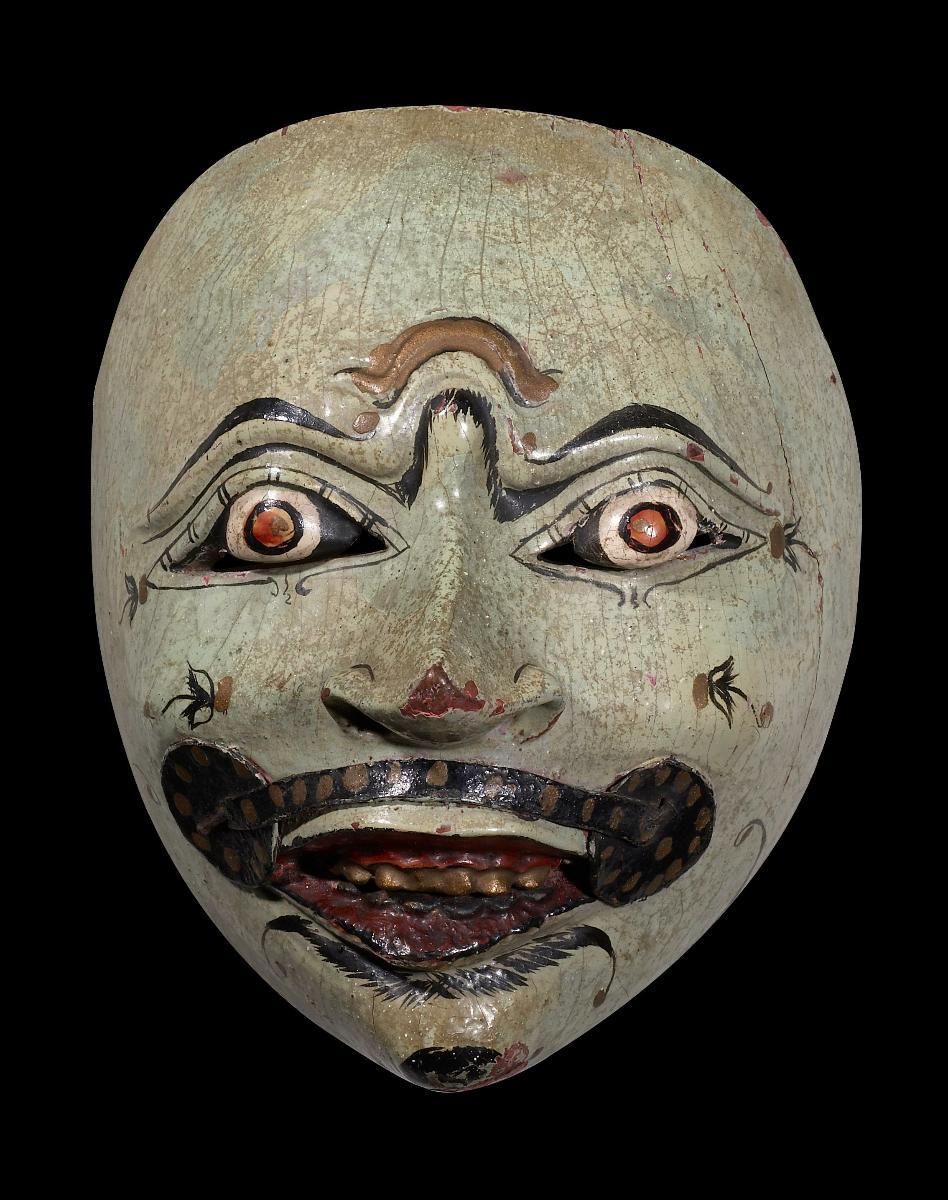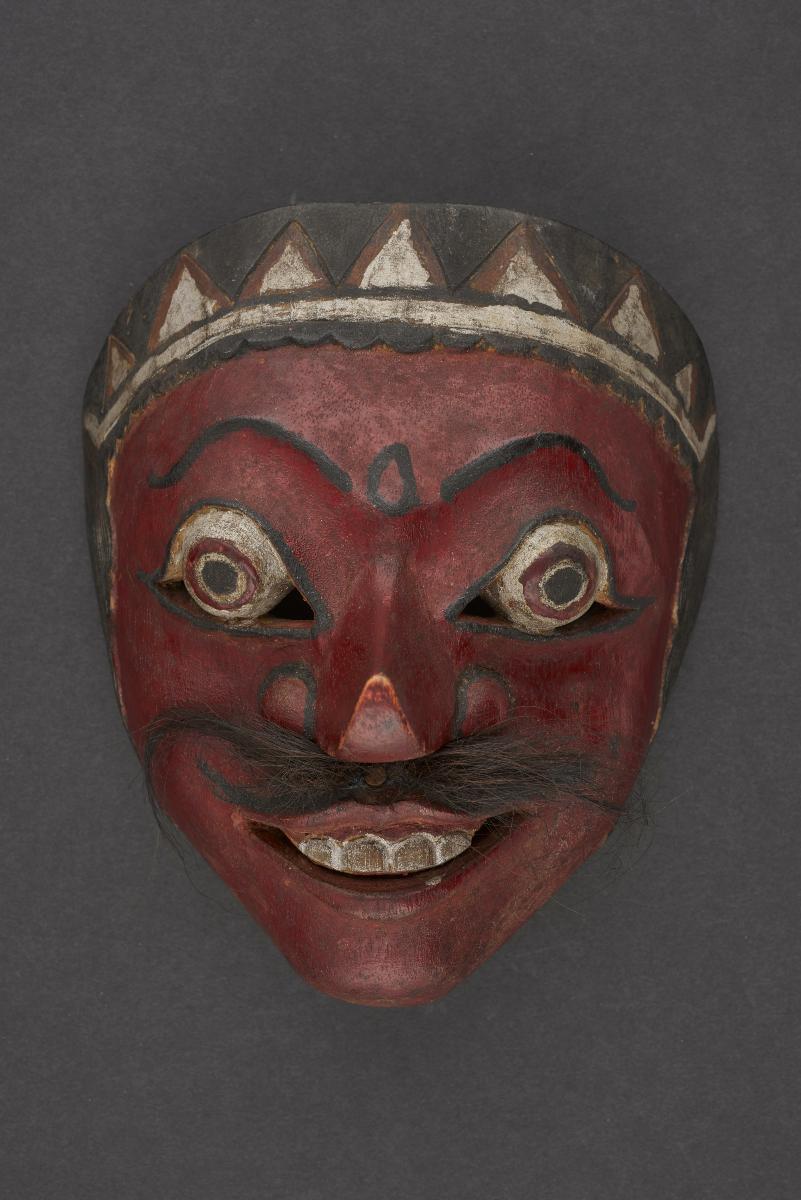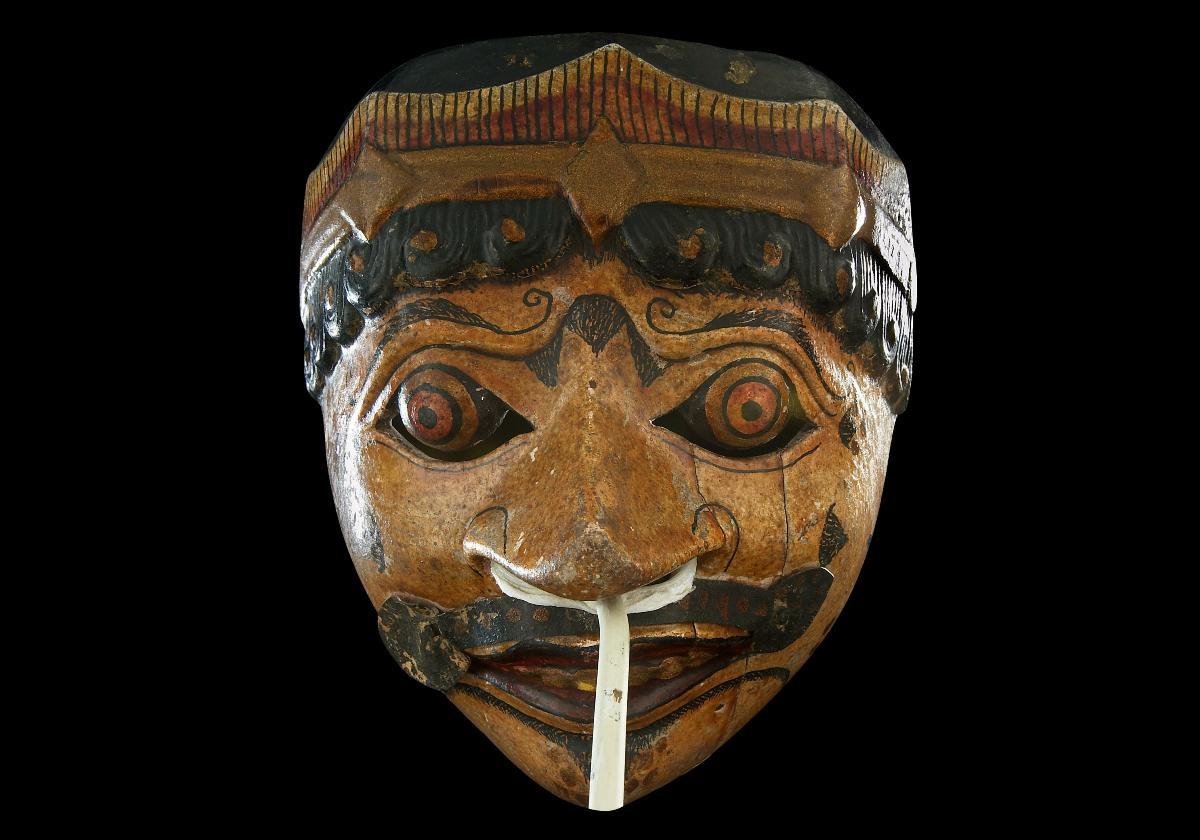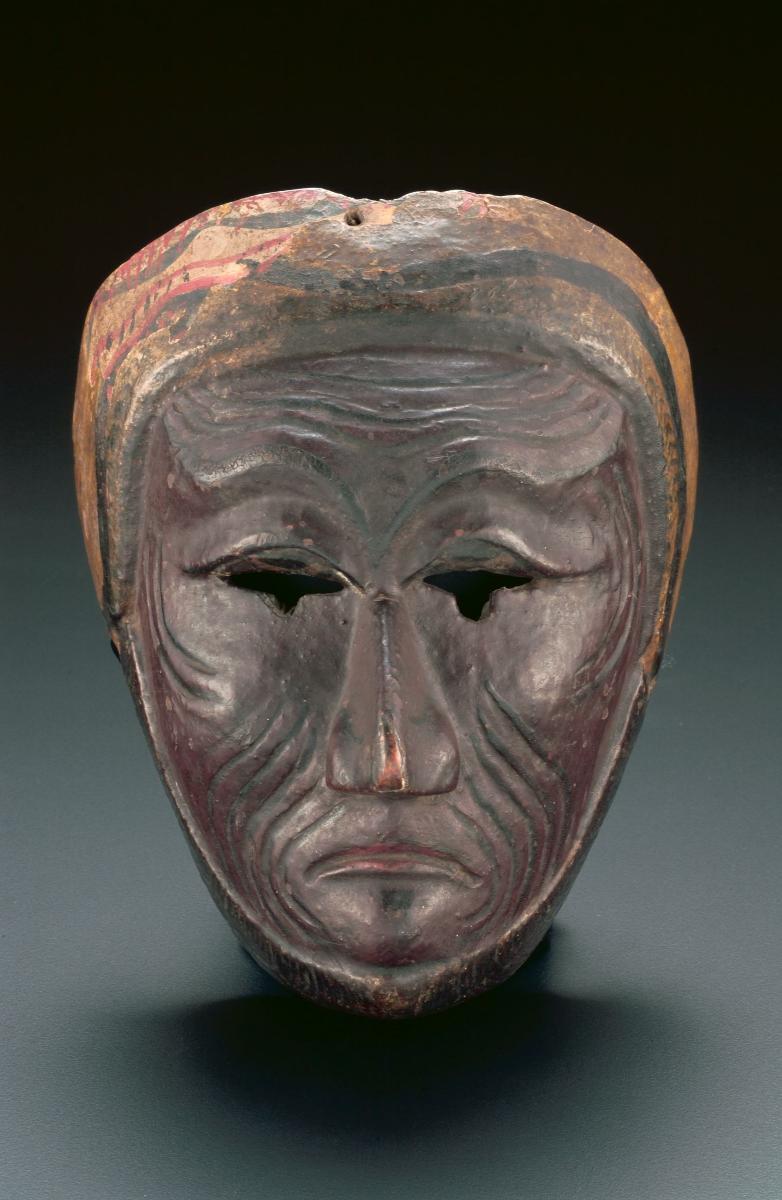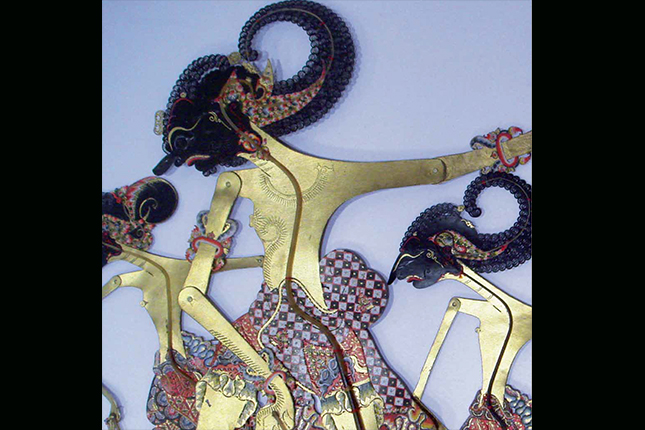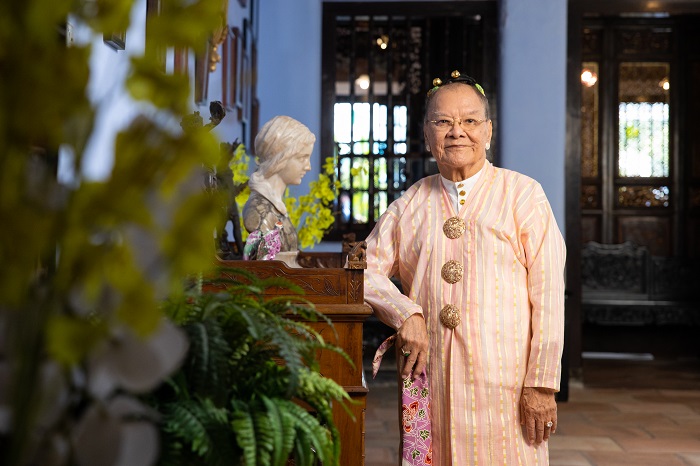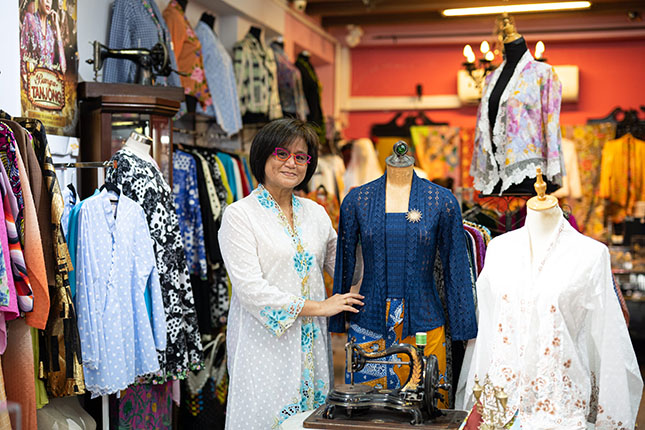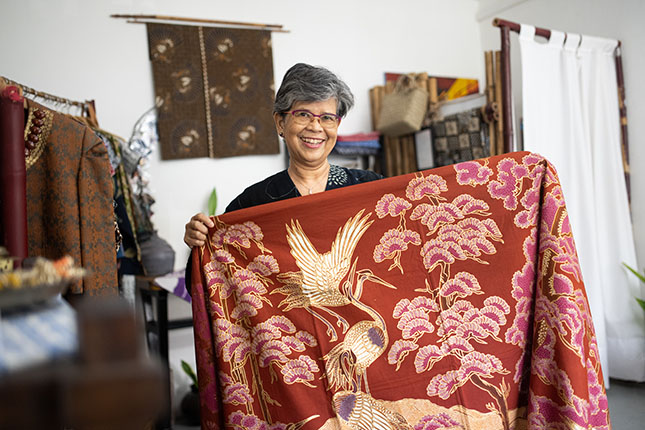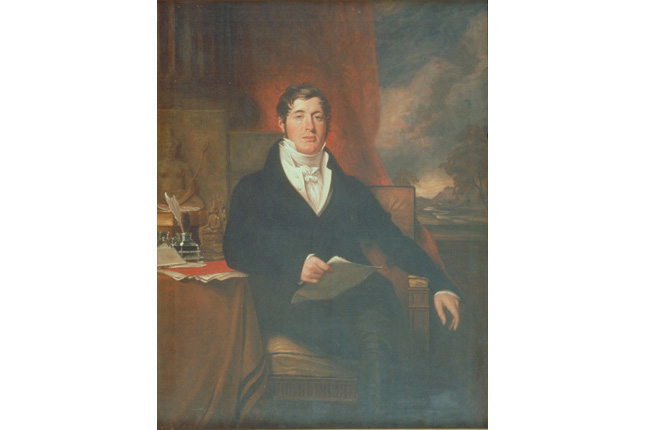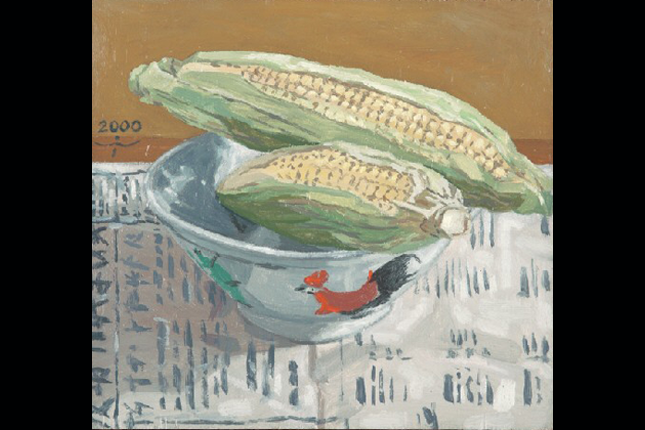Wayang topeng is one of the oldest of the Indonesian performing arts, and is accompanied by gamelan music. There is written evidence of Topeng (“mask”) dance from as early as the 11th century, and the oldest masks still in existence on Bali date to the 15th century. Wayang topeng became refined as a Javanese court art accompanied by music and narration, similar to the court masked dance of Cambodia and Thailand. Masks were used in dances for ritual purposes, funerals, initiation, and healing ceremonies, which are still undertaken today. It is believed the masks enable the wearer to communicate with spirits and to personify ancestors and deities. The spirit of the character is said to enter the dancer through the leather strap held in the teeth. One performer can play several characters by switching from mask to mask. Many dances perform the Panji narratives – adventures of Prince Panji and his beloved, Candra Kirana. Panji is the counterpart of Arjuna, the princely hero figure in the Hindu epic the Mahabharata. The colour of the face, as well as the size and shape of the eyes, indicate the type of character. Sophisticated and refined characters have pale faces with delicate features and narrow eyes. Strong and coarse characters have brightly coloured or red faces, with round, wide-open eyes.




